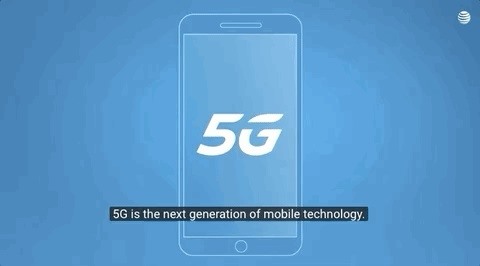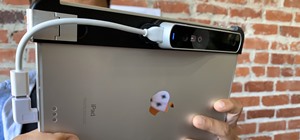Anyone who has been within a block of any wireless brick and mortar store or tech conference in the last couple of years has no doubt seen banners, posters, and videos promoting 5G high-speed wireless services on the way.
The last time I can remember a technology being so hyped before release or mainstream adoption was 3D televisions. Well, we know how that turned out.
Will 5G share the same fate? Yes and no.
To be sure, our wireless speeds will get faster, and those faster speeds will result in lower latency, aiding the emergence and robustness of IoT (internet of things), gaming, and AR cloud computing.
But while 5G will almost certainly make life better for wireless consumers and businesses relying on cloud applications, the industry's full frontal marketing assault to promote 5G seems, like the 3D TV promotions before it, misguided. If we're talking about tech events like CES and the like, sure, 5G promotions are expected. But layering cities with 5G advertisements for end users is mostly falling on deaf ears and not drumming up the kind of excitement such heavy-handed advertising might for other products and services.
Why? Well, it's one thing to promote such a service to businesses and startups, but consumers want the fastest, most accessible product. There's no need to overthink this.
Remember the excitement around 3G? What about 4G? The parties in the streets were epic, and the social media memes about each were hilarious and inventive — well, no, of course, they weren't. Unfortunately, consumers don't care what new letter you slap on an (invisible to them) product, as long as it works. So while adding an "X" to an iPhone might help consumers differentiate the new iPhone from the previous one, adding 5G to wireless services isn't exciting or meaningful to most, non-IT-focused consumers.

Alas, I suspect the real point of all this marketing is quite practical. Although there may be some expecting consumers to get giddy about all the promises around 5G, it's far more likely that these wireless companies are promoting the service so vigorously because of the increased prices they'll be able to charge. All this blue sky marketing is a polite warning: prepare your bank accounts for a little more pain.
Those higher prices will help pay for the billions in infrastructure rollout of new 5G networks, and new 5G smartphone components, all while keeping the profit margins wireless companies healthy. According to some estimates, the sheer cost of producing many of these new 5G handsets could add up to 20% to the overall cost of manufacture.
But unlike the hype that surrounded 3D TVs, a product few needed or wanted, wireless service has become a utility-like foundation of our daily lives.
So when the major companies force a wholesale switchover, most will have no choice but to pay whatever (likely higher) price the new phones and service packages incur. And consumers won't be able to opt out by just saying "5G isn't for me," as they did with 3D TV.
For wireless companies, this strategy is entirely logical from a business perspective. But the relentless 5G promotions and the lofty promises contained within them (despite extremely limited 5G coverage for years to come) are becoming onerous. Some reports estimate that Apple's iPhones won't get become 5G enabled until sometime in 2020 or later.
And that constant hum of 5G hoopla becomes even more troublesome when the definition of 5G gets muddied by the companies selling it. Sprint recently sued AT&T for labeling its latest service "5GE," "5G E," and "5G Evolution" service as true 5G.
"The significance of AT&T's deception cannot be overstated," read Sprint's legal complaint. "By making the false claim that it is offering a 5G wireless network where it offers only a 4G LTE Advanced network, AT&T is attempting to secure an unfair advantage in the saturated wireless market."
By calling out AT&T for referring to something that isn't quite 5G as "5G," Sprint is attempting to stop the consumer confusion before it starts. But it's already too late.
There are already numerous stories published by mainstream outlets explaining why AT&T's 5GE isn't 5G. Meanwhile, for the casually tech-savvy consumers who serve as information conduits to their non-techie friend networks, the term 5G has already become just another new corridor in a long and confusing maze of buzzwords and letters.

What does this mean for AR and the promises of 5G around it? In the near-term, not much. Even if 5G was widely available and cheap, we're still not equipped with the kind of wearable AR devices that would take advantage of such networks.
For now, enterprise AR is likely where the best examples of 5G will emerge to show off what's possible. Based on Magic Leap's software roadmap, which was made public around this time last year, the company will begin rolling out enterprise solutions soon, which would seem to be the perfect opportunity to demonstrate the power of its (real version of) 5G relationship with AT&T.
Nevertheless, even as we're still in a holding pattern for consumer AR devices that could take advantage of 5G, all signals indicate that our ubiquitous, 5G-powered wearable AR future is right around the corner.
Perception: 5G will change everything in AR.
Next Reality: 5G means higher wireless bills, but don't expect drastic improvements to AR mobility as rollout will be excruciatingly slow in most places.
This post was created as a part of our Future of AR series. View the whole series.
Just updated your iPhone? You'll find new features for Podcasts, News, Books, and TV, as well as important security improvements and fresh wallpapers. Find out what's new and changed on your iPhone with the iOS 17.5 update.























Be the First to Comment
Share Your Thoughts